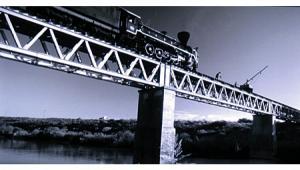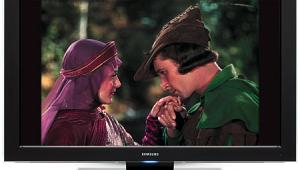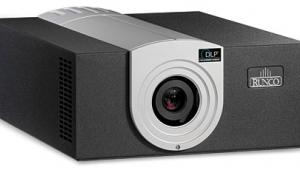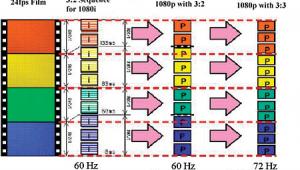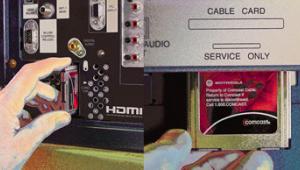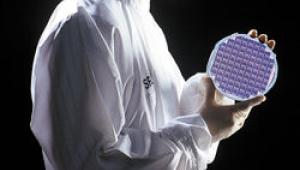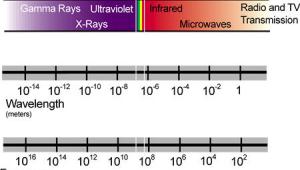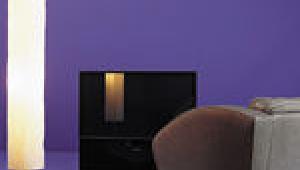The Great Audio Cable Debate Page 2

Fig1.jpg: In AudioQuest's FPC (functionally perfect copper), the grains of copper are much longer than in OFHC (oxygen-free high-purity copper), regardless of whether the strands are formed by casting or drawing. (©: AudioQuest 2005)
Noel Lee, founder and head monster at Monster Cable, takes some exception to these ideas. "We've experimented with purity of the copper and found that there is little or no benefit to different types of copper, as long as it's OFC. Beyond that, we've found that other factors are much more important than the purity of the copper, which isn't to say that copper purity doesn't have any effect. In general, there's no need to pay for exotic coppers when you may or may not hear a difference."
Others feel that the copper refining and drawing process has improved dramatically over the last few years to the point that OFC is not much better than "regular" copper. According to Kip Coates, senior product marketing specialist for audio/video cables at Belden, Inc., "We're now able to get most of the oxygen and impurities out of 'regular' copper; for all practical purposes, it's as pure as OFC. It's very hard to tell the difference in lab tests or by ear. There's an ASTM (American Standards and Test Methods) procedure that tests for OFC; we have seen some results that show standard copper passes that test. OFC may still have a slight advantage, but it's much less than it was a few years ago."
Another controversial electrical factor is called skin effect. It is well-known that alternating current tends to travel on the outer surface of any conductor, stranded or solid. That's why high-tension power lines are hollow; there's no need to support the added weight of a solid conductor. But does this affect the audio signal in a cable?

Fig2.jpg: (©: AudioQuest 2005)
Dimmitt maintains this is not important at audio frequencies. "In terms of sound, the only documentation I've seen is subjective. I've seen very little hard evidence that it makes a difference. If there is a difference, it's so subtle that it's not worth the expense of exotic cable."
However, Low disagrees. "The subjective effect in a single strand that's too large, anything above 18 gauge or so, is that the top end seems rolled off. The imaging and sense of space is lost. Fortunately, the solution to skin effect is easy. Just use a single strand that is smaller than 18 gauge."
Mechanical Factors
Most cable conductors consist of many hair-like strands of copper wound together in a bundle. Stranded conductors are insulated, combined, and wrapped in an electrical shield and outer jacket to form a complete cable. The simplest type of cable is an unbalanced line-level interconnect.
Most balanced line-level cables include two conductors wound around each other in a twisted pair surrounded by a shield. This is very effective at rejecting external RFI (radio-frequency interference) and EMI (electromagnetic interference) from nearby cables, transformers, and other sources of electromagnetic fields.
 Several companies use a quad configuration in their balanced cables instead of a twisted pair; Canare calls this Star Quad. The design uses four conductors twisted around each other; opposing pairs are connected at either end. According to former Canare COO Barry Brenner, "Star Quad gives you 20 dB better noise rejection than standard 2-conductor cable. You can be less concerned about running a Star Quad cable near a high-level line such as AC." Quad construction is great for rejecting RFI and EMI, but it has a little higher capacitance, so the high-frequency response may not be quite as good as a single twisted pair.
Several companies use a quad configuration in their balanced cables instead of a twisted pair; Canare calls this Star Quad. The design uses four conductors twisted around each other; opposing pairs are connected at either end. According to former Canare COO Barry Brenner, "Star Quad gives you 20 dB better noise rejection than standard 2-conductor cable. You can be less concerned about running a Star Quad cable near a high-level line such as AC." Quad construction is great for rejecting RFI and EMI, but it has a little higher capacitance, so the high-frequency response may not be quite as good as a single twisted pair.
QQQ Fig3.jpg: Canare's Star Quad balanced cables have two pairs of conductors wound in a helical pattern to improve RFI and EMI rejection over conventional 2-conductor balanced cables. (Courtesy Canare)
Many speaker cables consist of two side-by-side conductors with no shielding, but some versions, particularly from manufacturers specializing in exotic audio cables, use a variety of windings and twists. Canare uses a quad configuration in their speaker cables. As Brenner explains, "Instead of rejecting outside interference, it reduces the electromagnetic radiation due to high speaker-level signals by keeping the noise within the cable bundle itself, helping to prevent interference with nearby low-level cables."
Monster Cable touts the use of different-size strands, winding patterns, and conductor configurations for different frequency ranges, particularly in speaker cables. According to Lee, "A thick strand will carry low frequencies more easily, whereas a thin strand will carry highs. Beyond that, the differences are in the winding, the way the conductors are made up, and the groupings of different conductors."
The Right Connections
Connectors are just as important as the cable itself when it comes to preserving audio quality. Terminating the cable with a connector is the first consideration. According to Dimmitt, "No matter how much you spend on the cable, you can have horrible sonic problems at the connector if you don't have a good termination. People often blame problems on the cable when it's really the quality of the termination to the connector."
Low believes that speaker cables need no solder in the termination. "The ideal connection is called a cold weld or gas-type connection. If you crimp hard enough, all the round strands develop flat spots where they either touch each other or touch the connector. Even if you solder, it will go into the leftover spaces, not into that primary connection where you made the flat spots. Solder is useless in this case."
Then there's the contact between the connector and the jack. "Cheap connectors are often poorly plated," says Dimmitt. "Silver-plated contacts are especially prone to corrosion." What about gold plating? "Gold connectors are a big fallacy. Gold-to-gold is an excellent contact, but if you have silver or tin contacts on your equipment, you're throwing your money away and asking for problems by using a gold-plated connector. When you put electricity through a junction of dissimilar metals, there are electrochemical migrations over time that can cause problems. That's not necessarily true in the field where you're plugging and unplugging things all the time."
Lee prefers to avoid connectors whenever possible. "If I could get into the amplifier boards, I'd solder directly into them. In some recording studios, they bypass connectors altogether because they degrade the sound." Of course, this isn't always practical, so Monster Cable connectors are soldered, welded, or crimped as appropriate.
Exotic Designs
Another controversial phenomenon is the electromagnetic interaction between the conductors within a cable. Lee notes that a twisted pair configuration can reduce the problem. "Time-domain distortions are electromagnetic in nature. If you twist the plus and minus conductors in a balanced cable together, some of the intrinsic magnetic field is cancelled out in addition to rejecting outside interference."
This interaction also affects the individual strands in a conductor. According to Low, "The magnetic field around each strand changes as the current moves back and forth. This tends to alternately pull and release adjacent strands, which changes the contact resistance between them. The harder the jacket on the stranded cable, the more dynamic and less distorted the sound because this mechanical component of the magnetic interaction is more restricted."
Low's solution to this problem is a modified "litz" design, in which individual strands are oriented in specific configurations. In AudioQuest's Hyperlitz construction, several solid, separately insulated strands are wound in a multiple helix along the length of the cable to form a sophisticated twisted pair. This is said to reduce the problems associated with skin effect and electromagnetic interaction in addition to improving RFI and EMI rejection. As Low notes, "If you compare a cable made with bundled strands and a litz cable with the same number of strands of the same size, you hear a large difference in the sound."
Conclusion
It appears that the debate over the effect of cable on the audio signal won't die down any time soon. Those with "golden ears" will continue to insist that the subtle effects are real and significant, while their opponents contend that it's all just hype.
Many manufacturers have tried to measure the subtle effects in an effort to improve their own products. For example, Whirlwind bought several different "exotic" cables and sent them to Belden for analysis. According to Laiacona, "They couldn't discern much difference in them. So they took the cables to an independent testing lab. Belden felt if there was a better product to be made, they wanted to make it. But the independent lab came up with nothing as well."
Nevertheless, there are some pretty famous engineers who are convinced that these cables sound better than "ordinary" cables. Joe Harley is the producer for AudioQuest Music, a record label associated with the cable manufacturer. "Last year, we recorded a string octet with two Neumann M50 tube microphones. As usual, we ran AudioQuest Diamond balanced mic cables (with solid silver strands in a Hyperlitz configuration) back to the mic preamps in the control room.
"Then, just as an experiment, we changed the mic cable to something more standard, something considered perfectly fine by many professionals, and had the group play the same piece again. The engineers thought something must be wrong, the connection must be dirty; it couldn't possibly be just the cable they were hearing. There wasn't a lot of hum or extraneous noise; it just sounded grungier, not as clean. There was a graininess and harshness that hadn't been there before, in addition to sounding closed down." As a result, Harley was able to convince Bernie Grundman to rewire every link in his mastering facility with AudioQuest cables.
In the end, such exotic cables probably do make a difference in the sound. Low makes a good point about the effect of all audio components, including cable. "The only way to get good sound is by not damaging whatever you started with. Every piece of equipment puts out a signal that's distorted compared to the input. Better equipment causes less damage to the signal. The process is like a descending staircase. Every piece of equipment, including the cable, is like a step, taking its toll on the sound. If you replace any step with one that doesn't descend as far, the entire staircase doesn't descend as far, and you have a better sound."
Ultimately, you must answer two questions for yourself. Can you hear a difference between various cables? If so, how much can you afford to spend on them? Try to arrange a listening test with a dealer who specializes in cable; you might even be able to perform some experiments in your own setup. As with the rest of your equipment, get the cable that sounds best to you (within your budget). That way, your sound will be as good as it can be. Who could ask for anything more?



